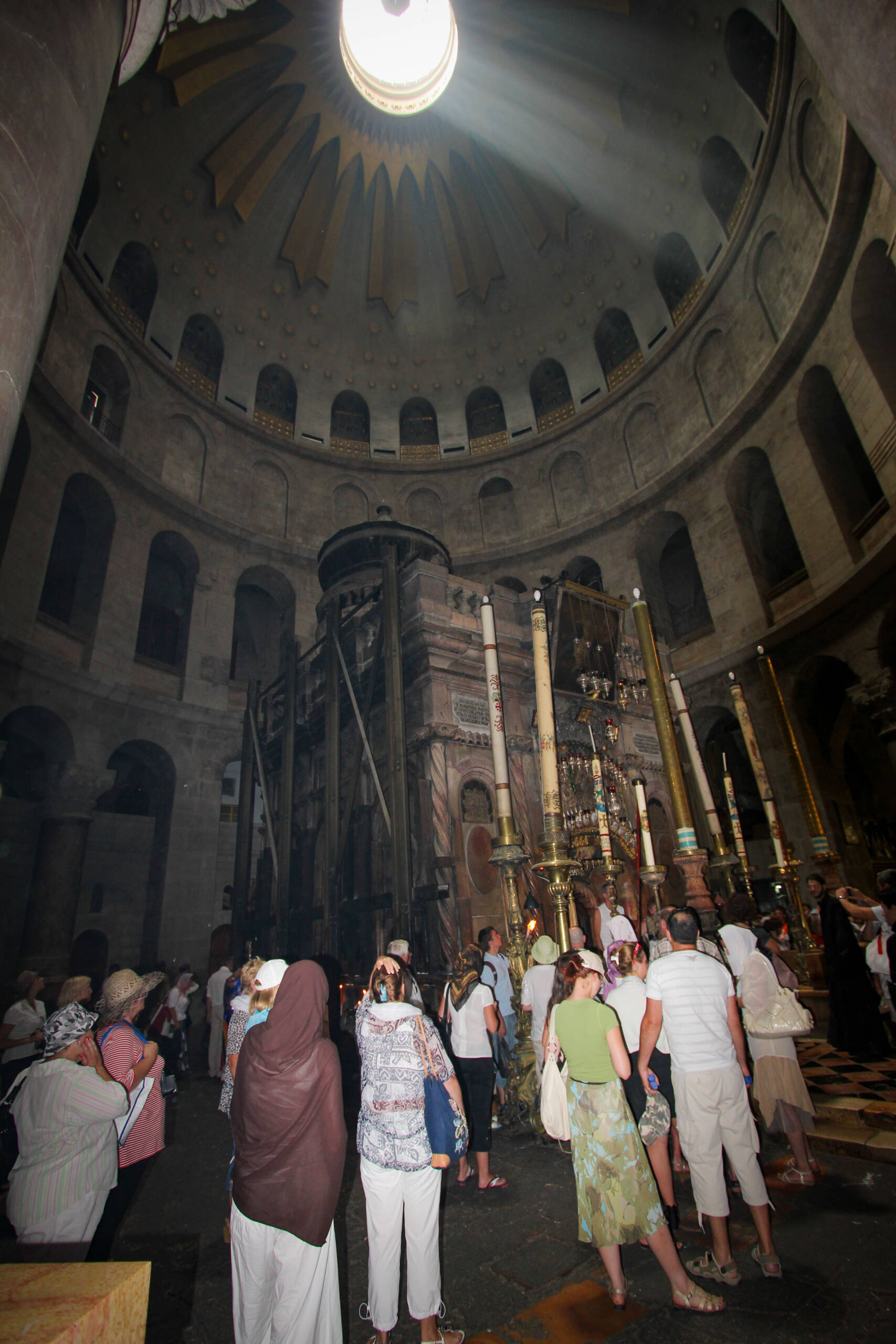The first thing that hits you isn’t necessarily the architecture or even the emotion — it’s the atmosphere. The moment you step inside, everything shifts. The outside world of shops, traffic, tight alleyways, vendors, and sunlight feels strangely distant, almost irrelevant. The walls of this place swallow noise differently; sound doesn’t quite echo, it hovers. Footsteps, whispered prayers, murmured conversations, the scrape of sandals on stone — all of it merges into a quiet hum that feels older than language itself.

The dome above is enormous, carved with patterns that resemble golden rays stretching outward like a petrified sunrise. Light streams down through the oculus at its center, cutting through drifting incense smoke in long, pale shafts. It’s almost theatrical — except it doesn’t feel staged. It feels earned. You find yourself looking upward without thinking, as if some instinct from deep inside insists that’s what you’re supposed to do here. The silence under the dome isn’t empty; it feels thick, aware, and strangely patient.
Below that celestial glow, the core of the basilica sits like a stone reliquary at the center of everything — the Aedicule, the small chapel marking the traditional site of Jesus’ tomb. It’s enclosed in scaffolding, and the metal supports look temporary but also permanent, like a compromise between fragile history and the unstoppable pressure of time. The stone is warm-colored, veined with soft pinks and smoky grays, rubbed smooth by centuries of hands, hopes, tears, and fingers tracing blessings.
People gather around it in a slow-moving circle. There is no single type of visitor here — there never has been. Some women wear modest shawls folded around their shoulders, like the woman standing toward the left of the image, her brown headscarf draped loosely yet intentionally, her posture respectful but not stiff. Another traveler wears casual clothes and sandals, clutching a small bag against her side as she waits in line. A man in shorts and a polo shirt stands nearby, hands loosely behind his back, shifting his weight from one foot to the other — not impatient, just quietly absorbing the moment. A young woman in a green top leans forward gently, curiosity guiding her more than devotion. The diversity isn’t distracting; it’s strangely harmonious. Everyone seems to recognize, even without acknowledging it aloud, that this is not just another tourist stop.
Candles — impossibly tall and pale — rise beside the shrine, their wax polished and smooth. They look ceremonial, ancient, and almost too delicate to touch. Above them, delicate oil lamps hang from elaborate golden chains, their small flames flickering as if responding to invisible breath. They reflect the little bits of gold scattered around the interior — icons, crucifixes, metalwork — like whispered reminders of splendor, faith, and endurance.
The floor beneath your feet is dark and uneven, worn from centuries of sandals, leather boots, bare feet, military marching, processions, pilgrims arriving from deserts and mountains and seas far away. Every step you take rests over layered centuries — Roman foundation stones, Byzantine reconstruction, Crusader masonry, Ottoman repairs, modern restoration. The building is not seamless; it is patched, fractured, stitched together by history, politics, devotion, conflict, disaster, and reconstruction. And somehow, that makes it feel more alive.
A faint smell hangs in the air — incense mixed with stone dust, candle wax, and maybe just a hint of human closeness. It isn’t unpleasant. If anything, it’s grounding. You can almost imagine it smelled like this five hundred years ago. Or a thousand. Or the day after the first person ever walked through its doorway.
Watching the people around you — all quietly processing their own private reactions — it becomes obvious that faith isn’t required to feel something here. The space itself pulls emotion from you, even if you weren’t planning for that.
Some pray.
Some stare.
Some try to photograph the light but give up because no camera gets it quite right.
And some simply stand, unsure what should happen next.
Eventually, you’ll walk out again — back into Jerusalem’s sun, chaos, markets, and life — but the interior stays with you. It doesn’t fade quickly. You may find yourself replaying the moment: the beam of light from the dome, the silence in motion, the faces of strangers united in a shared pause, and the ancient tomb at the center of it all — fragile, protected, and immeasurably symbolic.
Places like this aren’t just visited.
They settle into memory and refuse to leave quietly.
Leave a Reply